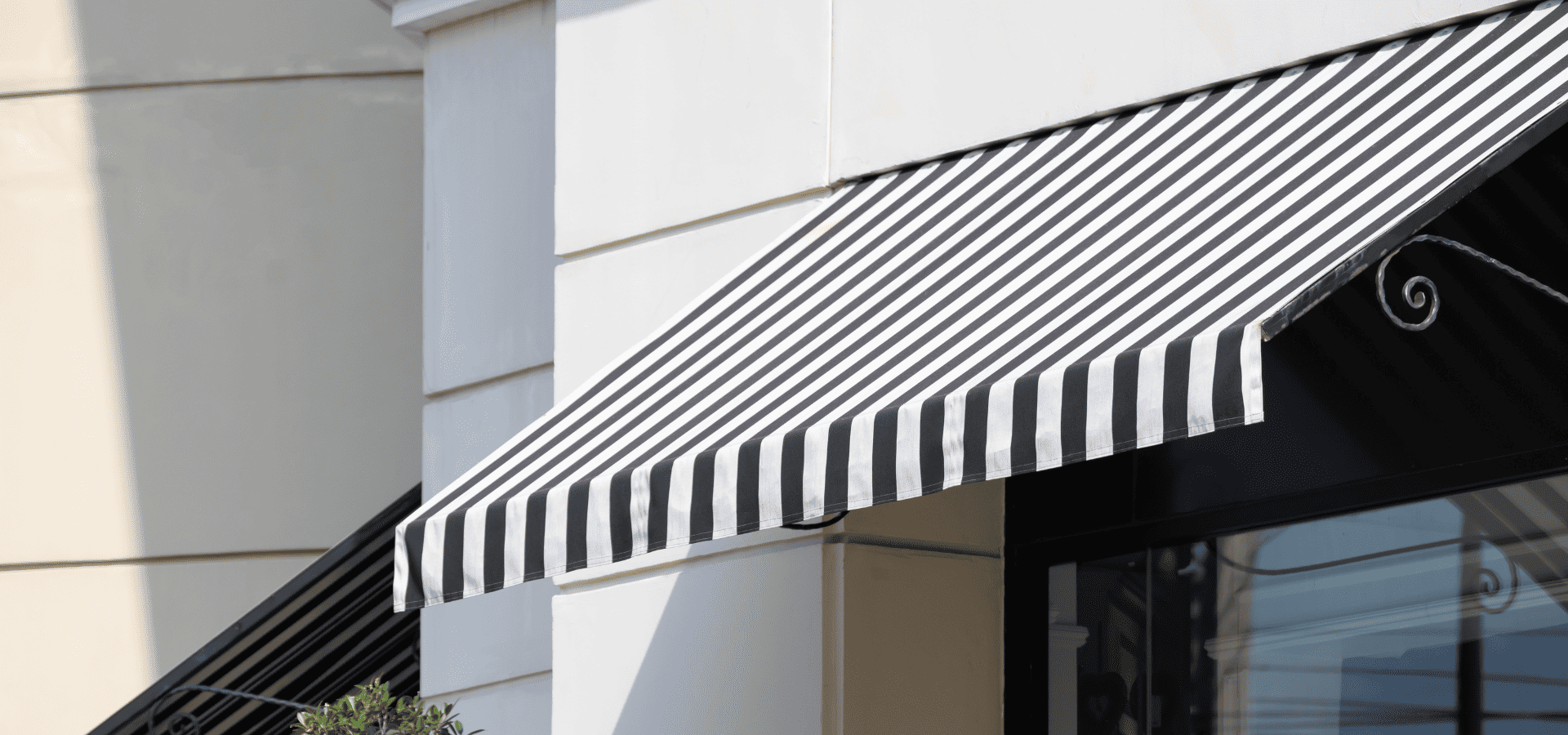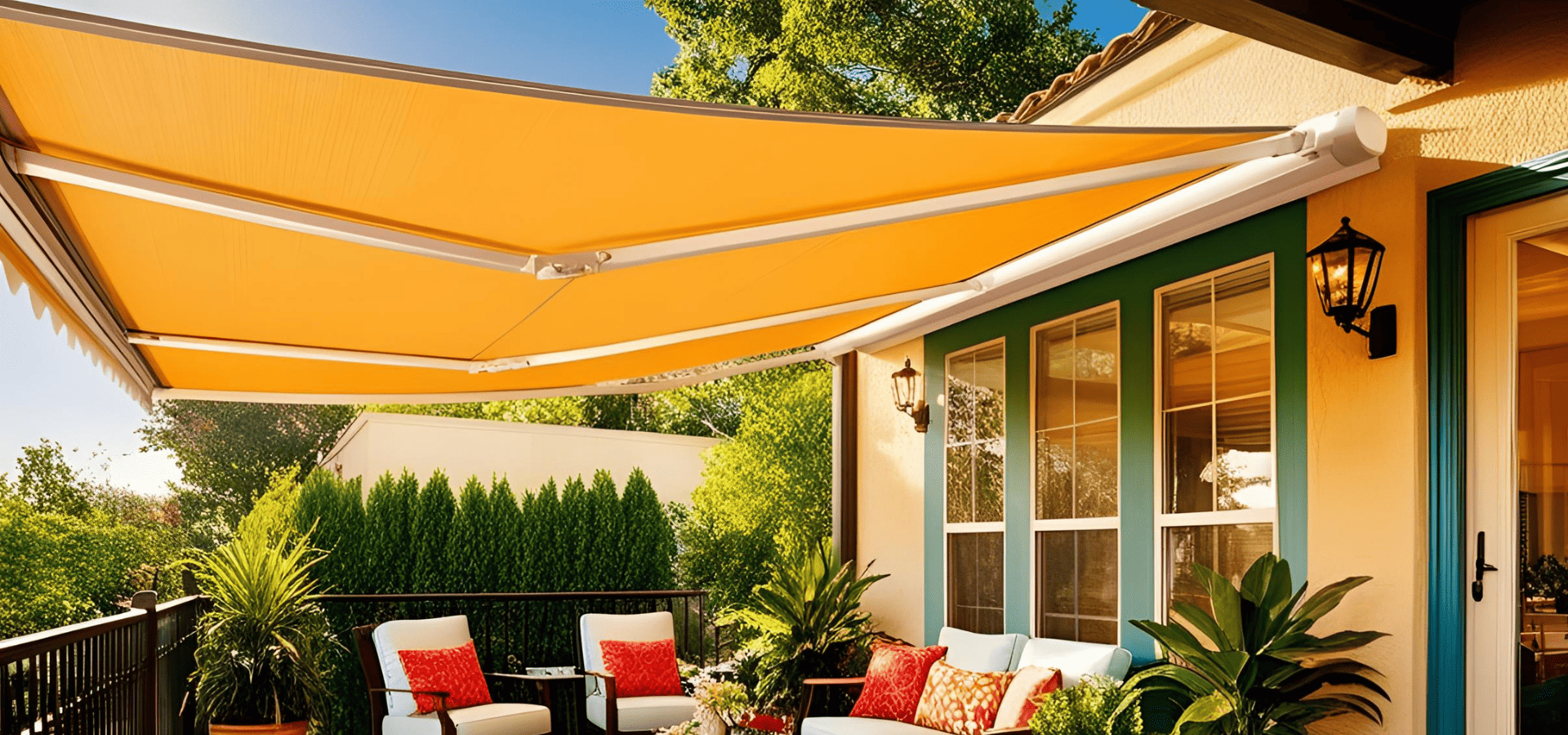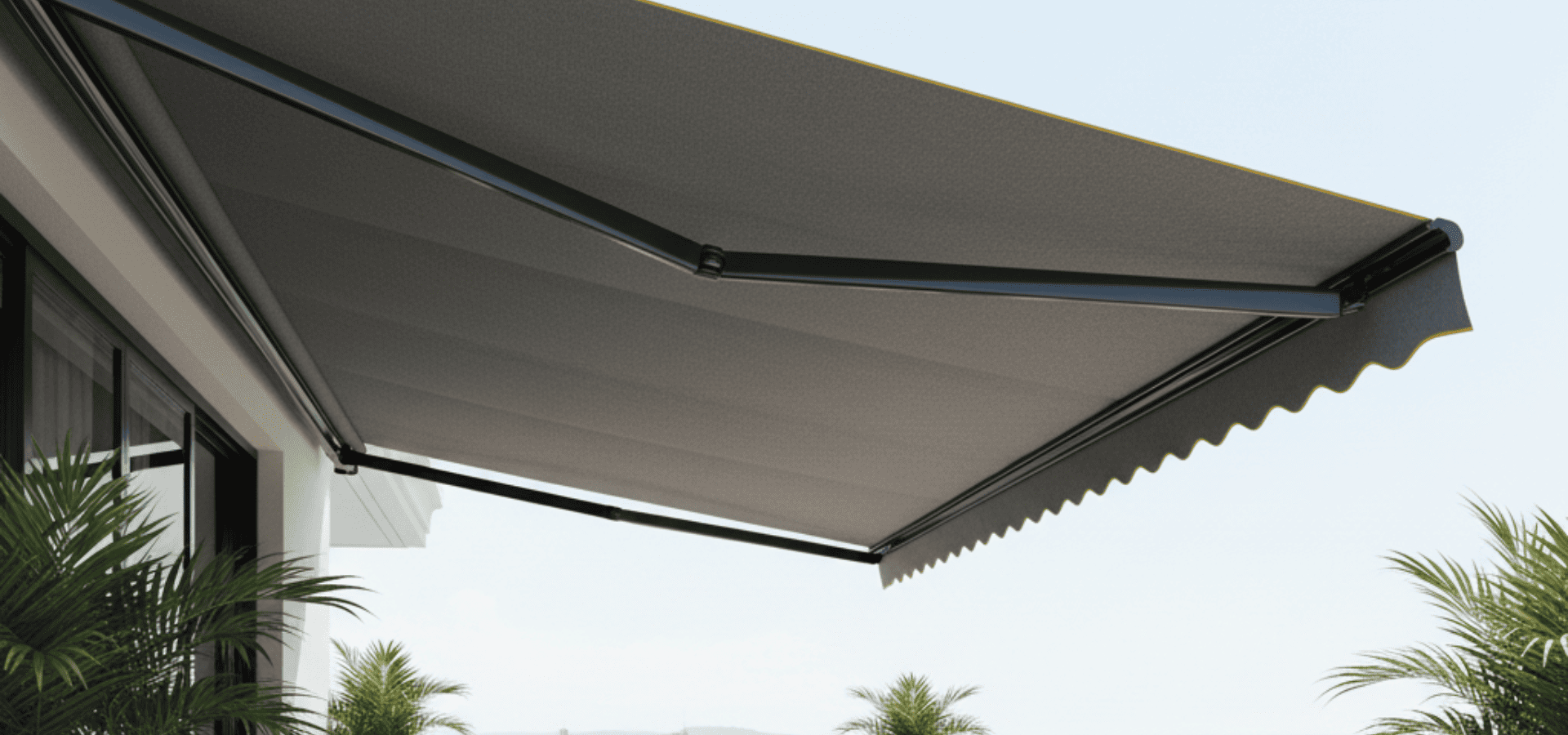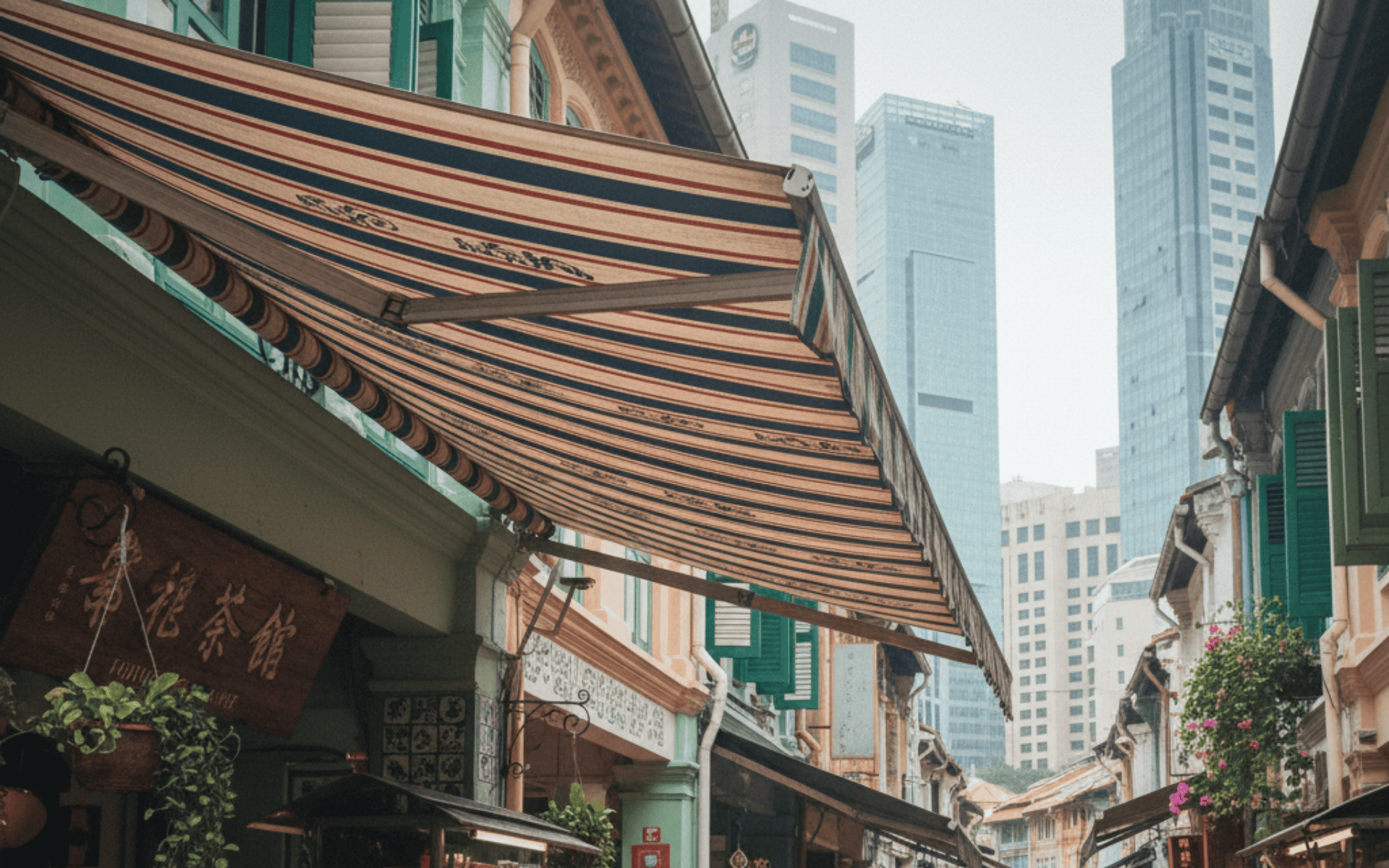The Complete Awning Maintenance Guide
So you have a beautiful brand-new awning installed to perfection. It shelters you from the rain and looks sleek as heck.
Well, without maintenance, it won’t stay that way for long.
Awning maintenance isn’t just about aesthetics either. Without proper maintenance, many issues can arise such as rusting, mechanic malfunctions, and water damage.
So if you’re wondering how to maintain your awning and keep it in tip-top condition, you’re in the right place.
Let’s get started.
What’s Hurting Your Awning?
First off, let’s go over what exactly it is that you’re safeguarding your awning against.
Your awning shelters you from the elements. This means aside from the hot, scorching sun shining down on it constantly, it’s also exposed to heavy rain.
No matter how durable an awning is, being exposed to constant heat and sunlight can cause colour deterioration and the material itself to break down over time. The rain can also moisture damage or permanent moisture stains and rust.
There may also be bird droppings, and if you don’t clean them off, they may become permanent stains.
Over time, these can combine to wear your awning out quickly if you don’t take the appropriate measures and perform the due maintenance.
As such, to prevent unnecessary repair and replacement costs, make sure to diligently perform the required maintenance.
Now, let’s go over which types of awnings need more maintenance and which ones don’t.
Which Awnings Need Maintenance?
All awnings require maintenance. However, most awnings actually don’t require much more maintenance besides the occasional clean with water or a detergent solution.
You should also check the structure to see if bolts and fasteners come loose over time, but aside from that, there’s minimal maintenance for most awnings.
These include glass, polycarbonate, and aluminium composite.
The two main types of awnings that require more frequent and tedious maintenance are metal and fabric.
Fabric is the softest awning material and also the least durable one, so it should come as no surprise that it’s also the one that requires the most maintenance and regular checks.
Metal, on the other hand, is generally quite a robust material. However, it can dent and rust easily, so regular checks are needed and any issues need to be fixed quickly before they get worse.
So if your awning isn’t either fabric or metal, your primary maintenance tasks will be to check the structural integrity and to clean your awning.
Awning Protection
Prevention is the best cure, so we’ll first be going over how to lower the chances of those issues happening.
For fabric, to prevent moisture damage, you can apply a layer of water-repellent protectant to create a layer that prevents water from reaching your fabric. This layer will also help your fabric better withstand UV rays.
For metal, similarly, you can apply a corrosion-resistant coating or sealant that will help your metal awning resist rust and corrosion and keep water out.
If your awning is flat, water may also pool up, which isn’t ideal. To prevent this, you can consider installing a rain gutter along the edges of the structure to help drain water and prevent it from staying on your awning, reducing the risks of moisture damage as well as mould and mildew.
Regular Maintenance Tasks
Besides cleaning, the maintenance for awnings, including low-maintenance ones like glass and polycarbonate, is mainly about checking for damages and repairing them.
So regardless of your awning material, check regularly for cracks, chips, etc, and fix them quickly when you spot them. Otherwise, a crack may lead to a big hole, and a chip may lead to bigger parts breaking off.
For metal and fabric, the only additional maintenance task you’ll need to perform is really monitoring the protective coating or sealant and reapplying them when they wear off or are compromised.
Manufacturers will generally have a guide on how often the coating or sealant should be reapplied to maintain its integrity, but damages can happen before that, so you need to know how to spot these damages to know when to reapply the coating or sealant.
Here’s how to know that your coating or sealant has been compromised and needs reapplication.
Metal

For metal, it’s quite straightforward.
Corrosion-resistant coatings and sealants will form a visible layer on the metal awning. When there are holes in the layer, that area will very clearly have a different colour from the rest, so once you notice that, simply reapply the coating.
Note that if one area is damaged, that’s a sign that the coating or sealant is beginning to weaken, so it may be easily damaged in the future. As such, it can be worth simply reapplying the entire coating again instead of just over the compromised area.
Fabric

For fabric, the layer of protectant is usually transparent so as not to negatively affect its appearance.
As such, you won’t be able to visibly see the damages. Instead, you need to look out for signs of compromise.
The first sign that your water-repellent coating has worn off is that you no longer see water beading on the surface, but being absorbed by the fabric instead. This is a strong sign that the layer has worn off.
The next sign to look out for is discoloration. While the protectant layer is meant to be transparent, it will still have a very slight sheen. When the layer is compromised, you’re usually able to see that damaged part being a different colour than the rest.
It’s not as obvious as with metal, but if you pay close attention, you can spot it.
Maintenance For Retractable Awnings

If your awning is retractable, the mechanism will require additional maintenance.
However, since it’s a different kind of maintenance, maintaining the mechanism rather than the awning material itself, we created a different section dedicated to it.
For the retracting mechanism, again, you should inspect the cables, gears, and motor regularly for signs of damage or wear and tear, the same as you do for the awning material.
In addition to that though, a huge part of maintaining the mechanism is cleaning. Cleaning is even more important for the mechanism than for the awning material, because if dust and debris get stuck in the joints, it can cause operational issues or even serious damage.
Finally, the hinges, joints, and tracks all need to be lubricated at least annually or twice a year if the manufacturer recommends that.
It’s also a good idea to regularly test the mechanism to check that it extends and contracts properly, especially if you don’t often retract and extend your retractable awning.
Awning Repairs
As you regularly inspect your awning, when there are damages, you need to repair them too.
Some damages are too big to repair on your own and will require a professional, so you'll either have to engage
handyman services or contact an awning contractor, preferably the same one that installed your awning for you.
If they're just minor repairs though, then you can carry them out on your own. Here's how to perform minor repairs for your awning.
Fabric Repairs
For fabric, the two main types of repairs will be tearing and holes.
If your fabric tears at the seams, you can fix them as you would clothes. You can either sew them back by hand or use a heavy-duty sewing machine to sew them back.
For holes or tears in areas that aren’t the seams, you can patch them up quite easily with fabric repair kits.
Fabric repair kits are essentially plasters for your fabric awning. These patches usually look like fabric and all you need to do is to cover them over the hole, then let their adhesive backing do the work and stick on.
They’re really that simple.
However, fabric repair kits won’t work for larger holes, because you won’t be able to find a large enough fabric repair kit, and even if you did, they’re attached by adhesives.
For larger holes, the adhesive may not be enough to properly secure the fabric repair patch if it’s too big, especially under heavy rain.
So for larger holes, it’s usually best to just engage an awning contractor to patch it up for you or even replace the fabric entirely. You’ll know the hole is too large if you’re having a hard time finding a fabric repair kit big enough for it.
Metal Repairs
For metal, the two types of repairs you’ll have to perform are rust and dents or holes.
For rust, the remedy is quite straightforward. Just sand away the rust spots with a wire brush or sandpaper and apply rust-resistant paint over the area so that the rust doesn’t spread.
If the rust has spread significantly though, around a quarter or more, it may make more sense to replace the entire metal awning.
Now for dents and holes, for small dents, you can usually just hammer it back into place with a mallet. If you’re unable to access the back of the dent, you can also use a suction cup dent remover to suck it back into place.
For larger dents or holes of any kind though, you’ll have to engage a professional. Larger dents and holes require specialized tools that are not only expensive to buy and use once, but can also be dangerous to use.
Moreover, larger dents and holes can compromise the structural integrity of the metal awning. Even if you managed to fix them, it takes a professional to judge and see if it’s safe for continued use or requires further repairs or even replacement.
Conclusion
All in all, awning maintenance is mostly about monitoring and checking on your awning and the mechanism regularly. It’s not so much about actually performing any maintenance tasks or fixes.
Just remember that when there are issues, either fix them quickly yourself or contact a reputable awning contractor like
Uni Shades, or they may escalate to bigger issues that may even compromise your safety.


